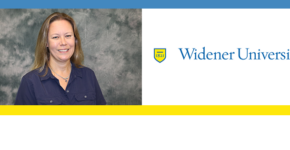 Are plants tricking insects into taking their nectar?
Are plants tricking insects into taking their nectar?
Kate Goodrich, associate professor of biology at Widener University, explores.
Kate Goodrich is an Associate Professor of Biology at Widener University. She earned a Bachelor’s degree in Theater prior to entering graduate school for botany, where she earned a Ph.D. in Plant Biology in 2007. She came to Widener University as an Assistant Professor in 2009, and has spent the past 12 years working with numerous undergraduate research students in her lab and at field sites. Her research focuses primarily on the chemical ecology of plants, and how plants use scent blends to communicate with the wide variety of insects in their environment. Her scholarly work has appeared in peer-reviewed journals such as International Journal of Plant Sciences, American Journal of Botany, and New Phytologist. Current research projects in her lab involve the pollination biology of pawpaw and the ecology of the fly species that act as pollinators. At Widener – a primarily undergraduate institution- Goodrich focuses on inclusive mentoring practices with undergraduates in research, especially students from groups underrepresented in STEM fields. Students from the lab have presented at national and international botany conferences, and the work featured in this Academic Minute was largely contributed to by recent Widener graduates Inesha Ellis (’20), Allison DeHaas (’20) and Rebecca Senski (’19).
The Pollination Biology of PawPaw
I’m investigating the pollination biology of pawpaw (Asimina triloba) – a flowering tree that grows across eastern North America. The species belongs to an otherwise tropical plant family, and many of its tropical relatives have strongly-scented flowers pollinated by beetles. The temperate pawpaw has had to vary this theme, with flowers emitting yeasty floral odors to attract mostly fermentation-loving flies. Fermentation volatiles are rare in floral scent blends of “typical” flowers, and the flies that pollinate pawpaw flowers are not “typical” flower-loving flies in search of pollen and nectar.
We’re working to determine whether this pollination system is a case of floral mimicry – a pollination strategy where floral features such as scent and color, advertise something not actually offered by the flower. The pollinating insect is fooled into visiting the flower under false pretenses – hopefully more than once – in order to move pollen from one flower to another. To demonstrate this in pawpaw, we would need to show that the pollinating flies are, in fact, expecting a different resource when they investigate the flower. In our research, we’re seeking fermenting substrates that co-occur with blooming pawpaw trees at our field sites in spring, to see how well the floral scent chemistry matches the odor blends from the substrates. We’re also collecting insects attracted to these fermenting substrates to see how well they match the insects identified as pollinators.
This work addresses interesting questions about how “convincing” a flower’s characteristics must be in order to fool flies into visiting when they’re seeking a pile of fermenting fruit or a leaky flow of fermenting tree sap upon which to feed or lay eggs. Understanding these systems helps us better understand the selective pressures which evolutionarily shape the amazing variety of floral features in plant species surrounding us, as well as the sensory perception of insects foraging for resources while trying to avoid deceptive, rewardless flowers.
Read More:
[In Defense of Plants] – Ep. 176 – On Pawpaw and Floral Mimicry
[NPR] – The Pawpaw: Foraging For America’s Forgotten Fruit
[WV Public] – Searching For The Pawpaw’s Indigenous Roots


Comments
One response to “Kate Goodrich, Widener University – The Pollination Biology of PawPaw”